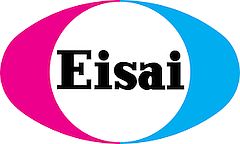|
| Tuesday, 25 August 2020, 10:30 JST | |
| |  | |
Source: Eisai | |
|
|
|
TOKYO, Aug 25, 2020 - (JCN Newswire) - Eisai Co., Ltd. announced today that a total of 10 presentations including the latest data on its in-house discovered orexin receptor antagonist lemborexant (product name: DAYVIGOTM CIV) will be given at the 34th annual meeting of the Associated Professional Sleep Societies (SLEEP 2020), to be held virtually from August 27 to 30, 2020.
The main presentations from Eisai at this conference include presentations relating to the SUNRISE 2 Phase III clinical trial conducted globally, including sites in Japan: long-term efficacy and safety results of lemborexant in elderly adults with insomnia (oral presentation, presentation number O-01, 474), responder profiles on treatment with lemborexant (poster number 479), efficacy and safety results of lemborexant in perimenopausal female subjects with insomnia (poster number 480), and others.
Lemborexant is a dual orexin receptor antagonist that inhibits orexin neurotransmission regulating sleep-wake rhythm by binding competitively to the two subtypes of orexin receptors (OX1R and OX2R). Lemborexant acts on the orexin neurotransmitter system and is believed to facilitate sleep onset, sleep maintenance, and wake by regulating sleep-wake rhythms. Lemborexant was approved in the U.S. for the treatment of adult patients with insomnia, characterized by difficulties with sleep onset and/or sleep maintenance, and was approved in Japan for the treatment of insomnia. The clinical development of lemborexant in patients with Irregular Sleep Wake Rhythm Disorder (ISWRD) associated with mild-to-moderate Alzheimer's dementia is ongoing.
Insomnia is characterized by difficulty falling asleep, staying asleep, or both, despite an adequate opportunity to sleep, that can lead to daytime consequences, such as fatigue, difficulty concentrating and irritability.(1),(2) Insomnia is one of the most common sleep-wake disorders. Approximately 30% of adults worldwide have symptoms of insomnia.(3),(4) In particular, older adults tend to have a higher prevalence rate with many experiencing insomnia symptoms for months to years. As a result, insomnia causes various social losses, such as long absences and reduced productivity.
Eisai positions neurology as a key therapeutic area, and it will continue to create innovation in the development of new drugs based on cutting-edge neurology research as it seeks to contribute further to improving the benefits of patients and their families in diseases with high unmet needs, such as insomnia.
(1) Institute of Medicine. Sleep disorders and sleep deprivation: An unmet public health problem. Washington, DC: National Academies Press. 2006.
(2) Ohayon MM, et al. Epidemiology of insomnia: what we know and what we still need to learn. Sleep Med Rev. 2002;6(2):97-111.
(3) Ferrie JE, et al. Sleep epidemiology - a rapidly growing field. Int J Epidemiol. 2011;40(6):1431-1437.
(4) Roth T. Insomnia: definition, prevalence, etiology and consequences. J Clin Sleep Med. 2007;3(5 Suppl):S7-S10.
About Lemborexant
Lemborexant is Eisai's in-house discovered and developed small molecule that binds to orexin receptors, OX1R and OX2R, and acts as a competitive antagonist (IC50 values of 6.1 nM and 2.6 nM, respectively). The mechanism of action of lemborexant in the treatment of insomnia is presumed to be through antagonism of orexin receptors. The orexin neuropeptide signaling system plays a role in wakefulness. Blocking the binding of wake-promoting neuropeptides orexin to receptors OX1R and OX2R is thought to suppress wake drive (Ki values of 8.1 nM and 0.48 nM, respectively). Higher affinity and faster on/off receptor kinetics of lemborexant to orexin receptor 2, which also suppresses non-REM sleep, indicates its potential to facilitate non-sedative onset and maintenance of sleep. In June 2020, DAYVIGO was launched in the U.S. for the treatment of adult patients with insomnia, characterized by difficulties with sleep onset and/or sleep maintenance; and in July 2020, DAYVIGO was launched in Japan for the treatment of insomnia. In addition, Eisai has submitted new drug applications seeking approval of DAYVIGO in Canada, Australia and Hong Kong. In addition, a Phase II clinical study of lemborexant in patients with Irregular Sleep Wake Rhythm Disorder (ISWRD) associated with mild-to-moderate Alzheimer's dementia is underway.
About SUNRISE 2 (Study 303)
SUNRISE 2 is a 12-month multicenter, global (Japan, North America, South America, Europe, Asia, and Oceania), randomized, placebo-controlled, double-blind, parallel group Phase III study of 949 male or female adult participants (18 to 88 years of age) with insomnia disorder. SUNRISE 2 included a pre-randomization phase of up to 35 days (including a two-week placebo run-in period) and a randomization phase comprised of a six-month placebo-controlled treatment period, a six-month period of only active treatment, and a two-week period without treatment prior to the end-of-study-visit. Lemborexant 5 mg, 10 mg or matching placebo was taken orally in tablet form at home each night immediately before the patient intended to try to sleep for the first six months of study. Patients who received placebo during the first six-month period were administered lemborexant 5 mg or 10 mg for the second six-month period. Patients who received active treatment during the first period continued on the treatment to which they were originally randomized.
The primary outcome measure was mean change from baseline in subjective sleep onset latency after six months of placebo-controlled treatment. Key secondary outcome measures were mean change from baseline in subjective sleep efficiency and subjective wake after sleep onset after six months of placebo-controlled treatment.
From the results, the primary endpoint and all secondary endpoints for efficacy were achieved for lemborexant arms, and statistically significant improvements in sleep onset and sleep maintenance were confirmed for lemborexant arms compared to placebo during the six-month treatment period. The common adverse events in the lemborexant arms were somnolence, nasopharyngitis, headache and influenza.
Contact:
Media Inquiries:
Public Relations Department,
Eisai Co., Ltd.
+81-(0)3-3817-5120
Topic: Press release summary
Source: Eisai
Sectors: BioTech
https://www.acnnewswire.com
From the Asia Corporate News Network
Copyright © 2024 ACN Newswire. All rights reserved. A division of Asia Corporate News Network.
|
|
|
|

|
|
|
|